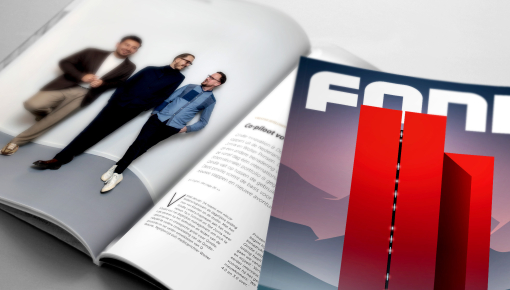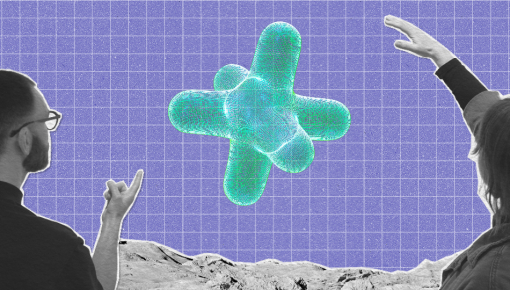How will data and AI change innovation and design? – Part I
Data and AI are changing the future of work: they are critical inputs to decision making, and in some cases can replace human labour entirely. However, McKinsey predicts that fewer than 5% of occupations can be fully automated with today’s AI advances. How will that influence innovation and design services?
AI-enabled products are already pervasive in the finance, logistics, HR, digital content and life science industries. Examples range from fraud detection, strategy and risk advisory, an HR agent (Edgy), early cancer screening or using genomic data to predict protein structures.
All of these applications play to the strengths of today’s AI: they accelerate repetitive analytical processes by finding correlations in vast datasets, detecting patterns and flagging potential (predefined) anomalies; be it a cancer gene, an unusual transaction or a hazard that prompts a self-driving car to hit the brakes.
This kind of ‘skill assistance’ has already proven useful to Innovation, Design and Engineering teams, who use AI-enabled data applications to automate, accelerate and enhance consumer research, creation processes and marketing execution.
Qindle views innovation through three dimensions – design (the human-centred, ethical driving force), data (helps to build truth behind user insights) and technology (the differentiator in a given category). Streamlining workflows in these domains is useful – but where are the bigger opportunities for data and AI in the wider design process? This is Qindle’s data-driven design vision.
Stereotypically, big data sets and repetition are not favourite topics within the design community.
Creatives are (or should be) focused on new perspectives, unique opportunities, and market differentiators. At Qindle, we embark on unknown journeys with our clients every day. We shape opportunities and design solutions that could play an essential role for a company or brand – even if they don’t exist yet.
Creativity is about making unexpected connections or disruptive statements, often based on little more than a gut feeling. How could AI-enabled data possibly replace such an innate, invisible process?
The question, then, is not about replacement, but enhancement. How can AI-enabled data bring an innovation and design professional the same value as it does for a medicine developer, fraud specialist or self-driving car user?
In my opinion, AI-enabled data can deliver added value to the creative process and enhance the user experiences of existing products. These six principles describe its role: Monitor, Automate, Customize, Synthesize, Reproduce and Create.
Successful applications often combine multiple principles, but for now let’s examine the value of each individually.
Principle 1 – Monitor
AI can detect specific combinations of sensor states in big datasets. This principle is widely used in self-driving cars, but also in more complex design thinking processes to exclude biased designers or recognize unique consumer behaviour in a specific context. More on monitor.
Principle 2 – Automate
Automate tasks on the basis of sensor data input and pre-defined actions. This can already be done by today’s AI-enabled assistants, but in a creative process there are many ways to automate and enhance existing design process steps and tools. More on ‘Automate’.
Principle 3 – Customize
Customize a design output to match its audience. This is an essential principle for brands in today’s crowded media landscape. AI applications help brands (e.g. in the fashion industry) to customize advertising to their audiences. More on ‘Customize’.



Principle 4 – Synthesize
Develop scenarios from multiple unrelated data sources. Synthesize several new data types to create detailed insight on consumer behavior. Understanding behavior and context is a critical part of creating relevant future brand and product propositions. The Synthesize principle can be applied in the innovation process but also in the improvement of already released products and services; for example, the way Netflix is using AI-enabled data. More on ‘Synthesize’.
Principle 5 – Reproduce
Train an AI application to understand an existing creative expression (art, music, literature) and allow it to re-create something in the same creative domain. IBM supercomputer Watson created a new Gaudi painting; The Next Rembrandt was created using multiple data sources; while music producers are taking advantage of AI-created melodies. To a certain extent, AI-enabled data can reproduce a creative skill or craft. More on ‘Reproduce’.
Principle 6 – Create
Using AI-enabled data, develop completely new products. NotCo is creating new dairy products using AI-enabled applications. The sheer scale of available data will play an essential role in filling innovation funnels of global FMCG companies. More on ‘Create’.



With access to data sets and AI applications going mainstream, it is now feasible to incorporate data science at more stages of innovation and design processes, in order to deliver more relevant products and services. Data and AI are changing the mix of qualitative consumer research, quantitative product research and prototyping required for successful innovation.
Designers play an essential role in directing these powerful AI-enabled data tools to develop high-quality, ethical solutions. Dasha Simons, AI business transformation consultant at IBM, stated this in our interview with her: “Design needs data as a powerful resource, but the same is true the other way around with tech savvy companies needing design to implement qualitative aspects.”
This article was first published on Taco’s Schmidt Linkedin Pulse on May 28, 2021.


